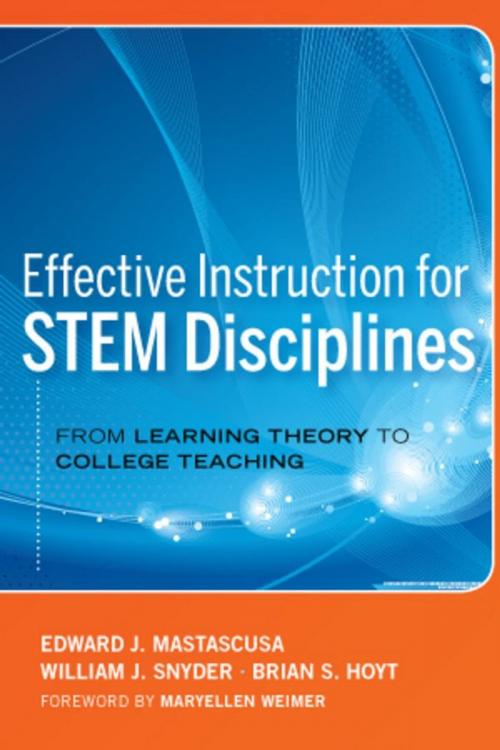Effective Instruction for STEM Disciplines
From Learning Theory to College Teaching
Nonfiction, Reference & Language, Education & Teaching, Higher Education| Author: | Edward J. Mastascusa, William J. Snyder, Brian S. Hoyt | ISBN: | 9781118025949 |
| Publisher: | Wiley | Publication: | March 23, 2011 |
| Imprint: | Jossey-Bass | Language: | English |
| Author: | Edward J. Mastascusa, William J. Snyder, Brian S. Hoyt |
| ISBN: | 9781118025949 |
| Publisher: | Wiley |
| Publication: | March 23, 2011 |
| Imprint: | Jossey-Bass |
| Language: | English |
Praise for Effective Instruction for STEM Disciplines
"The world of today's learners is a multimode, information-intensive universe of interactive bursts and virtual exchanges, yet our teaching methods retain the outdated characteristics of last generation's study-and-drill approach. New pedagogical methods, detailed and justified in this groundbreaking work, are essential to prepare students to confront the concerns of the future. The book challenges our traditional assumptions and informs the science, technology, engineering, and mathematics (STEM) community of the latest research on how the brain learns and retains information, how enhanced student engagement with subject material and its context is essential to deep learning, and how to use this knowledge to structure STEM education approaches that work."—David V. Kerns, Jr., Franklin and Mary Olin Distinguished Professor of Electrical and Computer Engineering, and founding provost, Olin College
"Every STEM faculty member should have this book. It provides a handy introduction to the 'why and how' of engaging students in the learning process."—David Voltmer, professor emeritus, Rose-Hulman Institute of Technology, and American Society for Engineering Education Fellow
"The poor quality of math and science education and the shortage of well-qualified graduates are acknowledged almost daily in the U.S. press. Here the authors provide much-needed insights for educators seeking to improve the quality of STEM education as well as to better prepare students to solve the problems they will confront in our increasingly technology-driven world."—Keith Buffinton, interim dean of engineering, Bucknell University
Praise for Effective Instruction for STEM Disciplines
"The world of today's learners is a multimode, information-intensive universe of interactive bursts and virtual exchanges, yet our teaching methods retain the outdated characteristics of last generation's study-and-drill approach. New pedagogical methods, detailed and justified in this groundbreaking work, are essential to prepare students to confront the concerns of the future. The book challenges our traditional assumptions and informs the science, technology, engineering, and mathematics (STEM) community of the latest research on how the brain learns and retains information, how enhanced student engagement with subject material and its context is essential to deep learning, and how to use this knowledge to structure STEM education approaches that work."—David V. Kerns, Jr., Franklin and Mary Olin Distinguished Professor of Electrical and Computer Engineering, and founding provost, Olin College
"Every STEM faculty member should have this book. It provides a handy introduction to the 'why and how' of engaging students in the learning process."—David Voltmer, professor emeritus, Rose-Hulman Institute of Technology, and American Society for Engineering Education Fellow
"The poor quality of math and science education and the shortage of well-qualified graduates are acknowledged almost daily in the U.S. press. Here the authors provide much-needed insights for educators seeking to improve the quality of STEM education as well as to better prepare students to solve the problems they will confront in our increasingly technology-driven world."—Keith Buffinton, interim dean of engineering, Bucknell University















